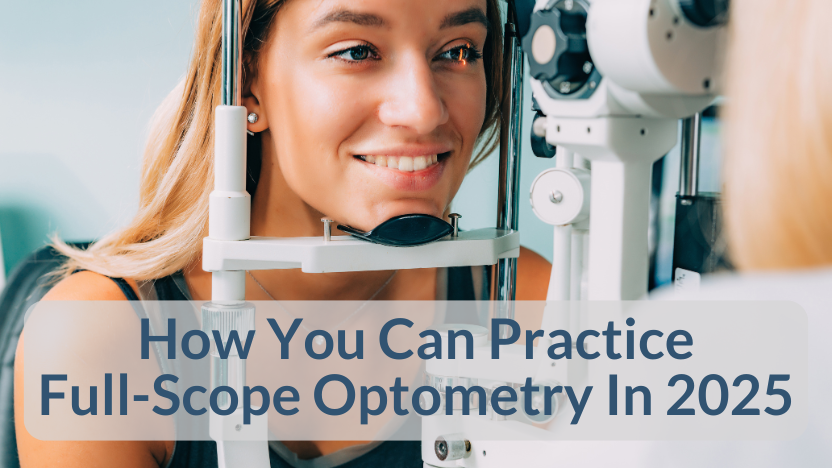Practicing “Full-Scope Optometry” In 2025
Posted by EyePromise on Jan 16th 2025
There are a few different “methods” of practicing optometry. They can be simplified into “general,” “medical,” and “full-scope” optometry. General optometry includes routine vision exams, while medical focuses on the identification and management of ocular concerns. As you may have guessed, full-scope optometry encompasses both general and medical practice.
However, healthcare reform has since updated the requirements for full-scope optometry, and these updates are aided by technology. Drs. James Grue, Ronald Snyder, and Michael Lipson recommend adopting the following to easily and successfully practice full-scope optometry.
Clinical Result Records
The healthcare reform requires clinical outcomes to be measured and tracked, with the resulting data used to support future clinical decision making. The doctors recommend signing up for a clinical registry. A clinical registry is software that ties into your current EHR, so there’s no additional effort required from you or your team. The data collected usually goes back 1-2 years, and it’s common for practitioners to uncover areas of improvement or opportunity almost immediately after implementation.
Patient Empowerment

It’s critical for patients to be active participants in their care in order to achieve the best results. Empowering patients through care plans that are tailored to their lifestyles and needs helps create a deeper engagement with the care plan, ensuring adherence. Additionally, these personalized care plans teach patients how to make more informed decisions in their day to day and, ultimately, how to better manage their eye health.
As the practitioner, you can then utilize the analytics from the clinical registry to help actively track any trends that you and the patient have deemed priority. For example, if you see a patient’s blood glucose levels have increased since their last visit, you can ask the patient, “What is going on in your life that is making it difficult to better control your blood glucose levels? What challenges are you facing on a daily basis?” This allows you to not only address the health trend, but offer solutions to any challenges that patient may be facing, including:
- Food and housing insecurities
- Cultural challenges
- Incorrect perceived assumptions
Once you better understand the challenges, you can offer more realistic solutions. This method of engaging the patient and checking the data is full-scope optometry.
Care Coordination
Finally, the reform requires coordination across the full patient care team. This synchronization helps ensure patients receive “seamless and integrated care across different providers and settings.” One way to ensure this level of sharing is effortless is by using Direct Secure Messaging (DSM). This messaging system is built into every certified EHR, however, many eyecare providers have been frustrated with this approach. These frustrations should be relieved once the new information blocking rules take effect next year.
An alternative to DSM is a Universal Co-management App, but it’s most used within eye care to coordinate care amongst patients and a specialized clinic.

As we look ahead to the rest of the New Year, delivering full-scope optometric care using the tools mentioned above will help achieve better patient outcomes and improved practice success. It also allows ECPs to establish themselves as a critical part of the patient care team. How are you implementing full-scope optometry into your practice in 2025?

